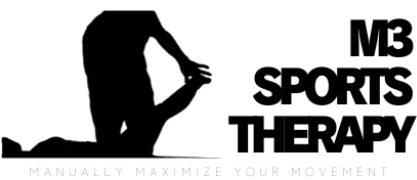English Down Below
現代社会では、タイピングが日常的な作業の中心となっていますが、手書きの持つ魅力はどこか懐かしさと共に深い影響力を感じさせます。脳への刺激への視点から見ると、手書きとタイピングは異なる神経経路を活性化し、記憶や学習に異なる効果をもたらすとされています。このブログでは、それぞれの方法がどのように脳を刺激し、私たちの思考や創造性に影響を及ぼすのかを探ります。手書きとタイピングの「違い」を知ることは、新たな学びやアイデアを生むきっかけになるかもしれません。
手書きとタイピングの比較に関する文献の一部です。これらの研究は、脳や身体での活動の違いを調査し、記憶や学習への影響を明らかにしています。
主な研究と結論
1. 手書きの学習効果
手書き経験は、文字認識や読み取りに関連する脳領域(例:読み取り回路)を活性化させる一方で、タイピングやトレースではそのような活性化は見られませんでした (James & Engelhardt, 2012)
2. 記憶における手書きとタイピングの違い
手書きで記録した単語は、タイピングで記録した単語よりも記憶に残りやすいことが示されました。これは、手書きがより複雑なタスクであり、追加のコンテキストを提供するためと考えられます (Smoker et al., 2009)
3. 脳活動の比較
タイピングと手書きのどちらも共通する脳領域を活性化させますが、手書きではより広範囲の視覚-運動機能が関与することが示されています (Higashiyama et al., 2015)
4. 文字認識と学習の安定性
新しい文字を学ぶ際、手書きで練習した場合のほうが、タイピングで練習した場合よりも文字の認識が安定しやすいことが分かっています (Longcamp et al., 2006)
5. 学習と脳波パターン
手書きでは、脳の記憶や情報のエンコードに関連する特定の振動活動(シータ波)が強調され、学習環境において優れた効果が得られる可能性が示唆されています。(Askvik et al., 2020)
リラックスした時の活動でシータ波は見られますね
結論
手書きは、タイピングに比べて学習、記憶、および脳の特定領域の活性化において優れた効果を示します。特に、手書きはより複雑な運動プロセスを伴うため、学習や記憶に長期的な利点があると考えられます。
あとがき
便利が先走りタイプ増えることでなんでもデジタルの世界になってきています。一昔前までは漢字はひたすら書いて記憶しましたし、大事な電話番号はノートで保管していたりしますが最近手書きで書くことが減ってきたので漢字が書けなくなったり、電話番号を頭で記憶することが一気に減りました。脳の低下を感じる世の中ですが、わかっていても便利に流されてしまいます。
最近はメモはデジタルでなく、ノートにしましたが周りからの見た目もノートで記録しているのでスマホでメモしているのでは相手からの見え方も違いますね。また、連絡もSNSやチャットで連絡のやり取りをしているので電話をする機会が減りました。
更に手紙はもっと減りました。でも手紙はその分非常に喜ばれますね。便利さでは変えられない大事さがありますね
Handwriting vs. Typing: How They Stimulate the Brain Differently
Introduction
In today’s world, typing has become an integral part of daily activities. However, handwriting still holds a nostalgic charm and a profound influence on our cognitive processes. From the perspective of brain stimulation, handwriting and typing activate different neural pathways, impacting memory and learning in unique ways. This blog delves into how these two methods stimulate the brain and affect our thinking and creativity. Understanding the “differences” between handwriting and typing could be the key to unlocking new learning strategies and creative ideas.
Key Research and Findings
1. Learning Effects of Handwriting
– Handwriting activates brain regions related to letter recognition and reading circuits, which are not equally stimulated through typing or tracing [(James & Engelhardt, 2012)](https://doi.org/10.1016/j.tine.2012.08.001).
2. Memory Differences Between Handwriting and Typing
– Words recorded by handwriting are remembered more easily than those typed. Handwriting provides additional context and is a more complex task (Smoker et al., 2009)
3. Brain Activity Comparison
– While both handwriting and typing activate common brain areas, handwriting engages a broader range of visuomotor functions (Higashiyama & Takeda, 2020)
4. Stability in Character Recognition and Learning
– When learning new characters, handwriting practice results in more stable recognition compared to typing (Longcamp et al., 2014)
5. Learning and Brainwave Patterns
– Handwriting emphasizes specific oscillatory activities, such as theta waves, which are linked to memory encoding and provide a better learning environment (Askvik et al., 2020)
Conclusion
Handwriting offers superior benefits for learning, memory, and the activation of specific brain regions compared to typing. Its more complex motor processes may provide long-term advantages in memory retention and learning.
P.S
While the world becomes increasingly digital, with typing as the primary method of recording information, the importance of handwriting remains undeniable. In the past, people memorized phone numbers by repeatedly writing them down, or kept notes in physical notebooks. Today, these practices have diminished, resulting in reduced memory reliance and a sense of cognitive decline.
Switching back to handwriting, even occasionally, has its benefits. For example, using a notebook instead of a smartphone for notes can leave a better impression and foster deeper connections. Similarly, writing letters, though rare, is much more appreciated than digital messages. There’s an irreplaceable value in the tangible and personal touch of handwritten communication—something that technology cannot replicate.
References
James, K., & Engelhardt, L. (2012). The effects of handwriting experience on functional brain development in pre-literate children. Trends in Neuroscience and Education, 1 (1), 32–42.
Smoker, T. J., Murphy, C. E., & Rockwell, A. K. (2009). Comparing memory for handwriting versus typing. Proceedings of the Human Factors and Ergonomics Society Annual Meeting, 53 (22), 1744–1747.
Higashiyama, Y., & Takeda, K. (2020). Basis of typewriting: A functional study. Frontiers in Psychology, 11, 561378.
Longcamp, M., Lagarrigue, A., Nazarian, B., Roth, M., Anton, J.-L., Alario, F.-X., & Velay, J.-L. (2014). Remembering the orientation of newly learned characters depends on the associated writing knowledge: A study in a novel script. Frontiers in Psychology, 1338.
Askvik, E., Van der Weel, F. R., & Van der Meer, A. L. H. (2020). The importance of cursive handwriting over typewriting for learning in the classroom: A high-density EEG study of 12-year-old children and young adults. Frontiers in Psychology, 11*, 1810.

